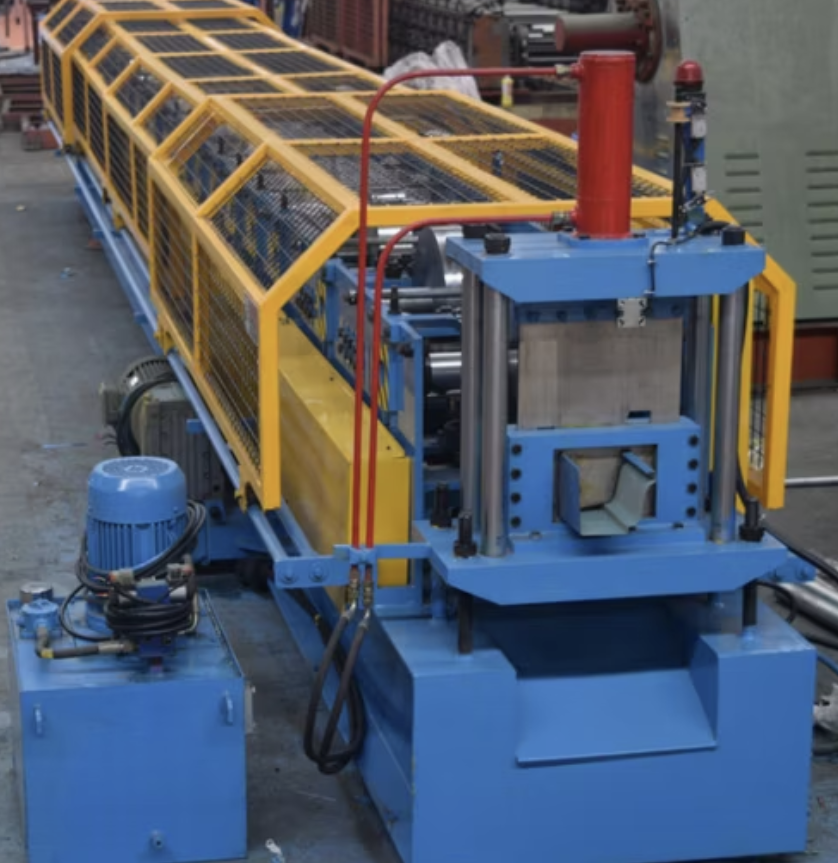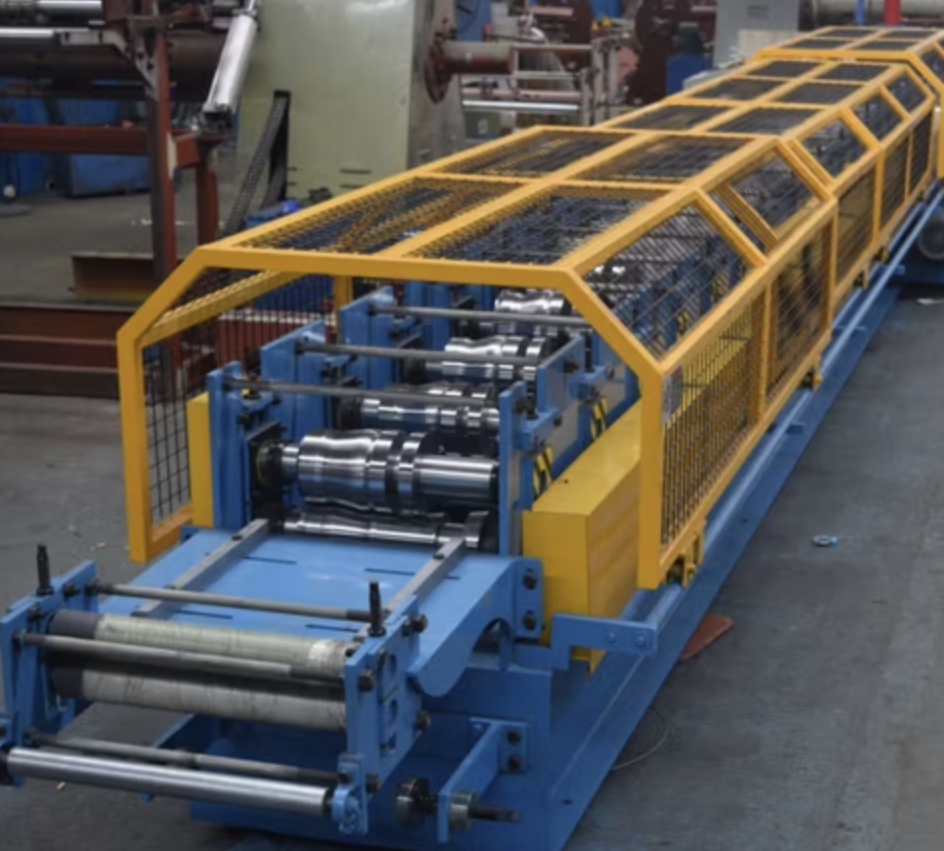To express an interest in this machine please submit the form below.

Not Sure What Machine You Need?
Select Your Profile, We'll Match It
Choose your desired profile drawing, and let Machine Matcher connect you with the best roll forming machine tailored to your needs.
Browse Profiles


Gutter roll forming machines are specialized equipment designed to produce seamless gutters for residential, commercial, and industrial applications. These machines take metal coils, usually made from materials like aluminum, steel, or copper, and shape them into continuous gutter profiles that can be cut to desired lengths on-site. Gutter roll forming machines are essential for companies in the construction and roofing industries looking to provide custom-fit, durable, and efficient gutter systems.
A gutter roll forming machine transforms flat metal coils into various gutter profiles through a series of rollers. Each roller set gradually bends the metal to form the shape of a gutter. These machines can produce various profiles such as K-style, U-shape, half-round, and box-type gutters, depending on the machine setup. Gutter roll forming machines are compact, mobile, and designed to handle the high demands of gutter production, especially for custom lengths on job sites.
1. Roller Materials
2. Frame Size
3. Motors
4. Control System (PLC)
5. Machine Speed
6. Cutting System
7. Profile Types and Sizes
8. Safety Features
9. Extras
Setting up a gutter roll forming machine involves a few key steps:
To ensure optimal performance and longevity, routine maintenance is essential for gutter roll forming machines:
Q1: What materials can a gutter roll forming machine process?
A1: Most gutter roll forming machines can process aluminum, steel, and copper. The choice depends on the desired gutter strength, durability, and resistance to corrosion.
Q2: Can one machine produce different gutter profiles?
A2: Yes, many machines are designed to produce multiple gutter profiles. However, switching profiles often requires changing roller setups or using add-ons.
Q3: What power supply is needed for these machines?
A3: Gutter roll forming machines generally require a 3-phase power supply, typically 220V or 380V, depending on the machine’s motor specifications.
Q4: What’s the typical production speed for a gutter roll forming machine?
A4: Standard production speeds range from 10-15 meters per minute, depending on the machine’s model and material type.
Q5: Is it possible to operate the machine remotely?
A5: Yes, some models offer remote control capabilities for basic functions, allowing operators more flexibility on job sites.
Q6: How precise is the cut-to-length function?
A6: Most machines have a cut-to-length precision of ±1 mm, which is suitable for creating seamless, uniform gutter sections.
Q7: Are these machines suitable for mobile use on job sites?
A7: Yes, many gutter roll forming machines are compact and designed for on-site operation, making them ideal for mobile gutter installation services.
Q8: What is the average maintenance cost?
A8: Maintenance costs depend on machine usage, but routine costs typically include lubricants, replacement rollers (as they wear), and hydraulic fluids, making it manageable with regular upkeep.
Copyright 2025 © Machine Matcher.